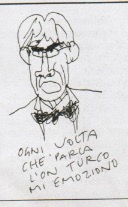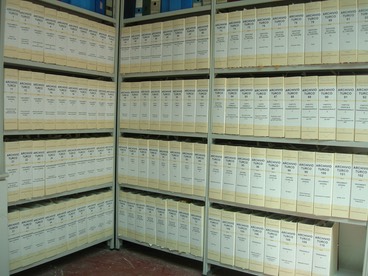The world of signals intelligence is one that governments have traditionally tried to keep hidden from public view. The secrecy attached to it by the United Kingdom and its allies in the Second World War, particularly codebreaking operations, carried over into the Cold War. Whether their adversaries were attacking them with weapons or diplomatic strategies, the concern was the same - that revelations about methods and successes would lead an adversary to change codes and ciphers and deny the codebreaker the ability to read the foe's secret communications.
Another aspect of the Second World War that carried over into the Cold War era was the close co-operation between five countries - the United States, the United Kingdom, Canada, Australia and New Zealand - formalised with the UKUSA Security Agreement of 1948. Although the treaty has never been made public, it has become clear that it provided not only for a division of collection tasks and sharing of the product, but for common guidelines for the classification and protection of the intelligence collected as well as for personnel security.
But over the last 50 years, codebreaking has become far more difficult, and often impossible - due to the use of computer-based encryption. At the same time, the interception of unencrypted communications (for example, air-to-ground communications) and other electronic signals - particularly radar emanations and missile telemetry - has grown dramatically in importance. This expanded role for signals intelligence was made evident in the construction and operation of a vast network of ground stations spread across the world, aircraft equipped with intercept antenna patrolling the skies (and sometimes being shot down), and eventually the launch of eavesdropping satellites. This activity did not escape the notice of the Soviet Union, which also was busy establishing its own elaborate network. It also became very evident to outsider observers that signals intelligence was an important and very expensive part of the Cold War.
That signals intelligence became more noticeable did not, for many years, alter the attitudes of the authorities about the necessity for strict secrecy. In the United States the National Security Agency, established in 1952, was officially acknowledged only in 1957. For years, what were well known to be US operated signals intelligence stations have been officially described as facilities engaged in the research of 'electronic phenomena' or the 'rapid-relay of communications.' It took the US over 20 years after the Soviet Union obtained detailed information on a US signals intelligence satellite even to acknowledge the existence of such satellites. Other nations have been equally reticent - the very existence of Canada's Communications Security Establishment was first revealed by the media in 1975.
In recent years some of the UKUSA governments have been somewhat more forthcoming about signals intelligence sometimes with regard to historical events, sometimes with respect to organisational structure, and sometimes about some aspects of current operations. But secrecy is still intense (although no more than in other countries). What the public does know, it knows largely because of the efforts of industrious researchers who have collected and analysed obscure documents and media accounts, and interviewed present and former intelligence officers who can shed light on signals intelligence operations. These researchers have included Desmond Ball in Australia, James Bamford in the United States and Duncan Campbell in the United Kingdom.
Nicky Hager's Secret Power earns him a place in that select company. Indeed, he has produced the most detailed and up-to-date account in existence of the work of any signals intelligence agency. His expos of the organisation and operations of New Zealand's Government Communications Security Bureau (GCSB) is a masterpiece of investigative reporting and provides a wealth of information.
The reader of Mr Hager's book will learn about not just New Zealand's signals intelligence activities, but those of its partners. Specifically, the reader will learn about the origins, the evolution, and internal structure of the GCSB; the Tangimoana and Waihopai ground stations and their operations; New Zealand's role in the UKUSA alliance, and some of the signals intelligence operations of the other UKUSA nations. Secret Power also serves as a fascinating case study of the role of a junior partner in an intelligence alliance.
Some, undoubtedly, will object to the unprecedented detail to be found in the book, taking the traditional view that secrecy is far more important than public understanding of how tax dollars are being spent on intelligence. Certainly, revelations that defeat the purpose of legitimate intelligence activities are unfortunate and waste those tax dollars. But the UKUSA governments and their intelligence services have been far too slow in declassifying information that no longer needs to be secret and far too willing to classify information that need not be restricted. A Canadian newspaper made the point rather dramatically a few years ago - after being denied access to a Canadian signals intelligence facility, the paper promptly purchased on the open market, and published, a satellite photograph of the facility, and its antenna system, first obtained by a Soviet spy satellite.
There are many individuals within the services who would prefer greater openness, but they frequently cannot overcome the intense opposition of those preaching the need for tight secrecy. The internal bureaucratic battle to get information declassified can be a long and intense one and those opposing disclosure have an advantage - often they are those in charge of security, who have developed a mindset which views any revelation as damaging. In the meantime, the public is kept in the dark. A free press, as manifested in books such as Mr Hager's, is a large step towards alleviating the problem.
Jeffrey T. Richelson
Alexandria, Virginia
May, 1996
Jeffrey Richelson is a leading authority on United States intelligence agencies and author of America's Secret Eyes in the Sky, and co-author of The Ties That Bind.


